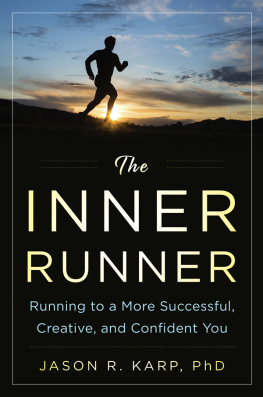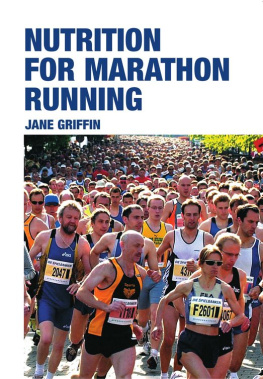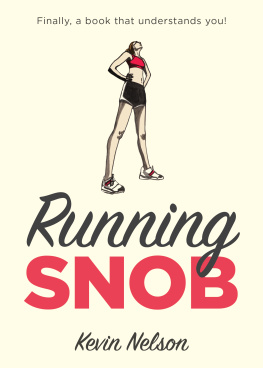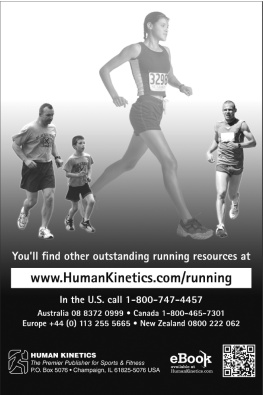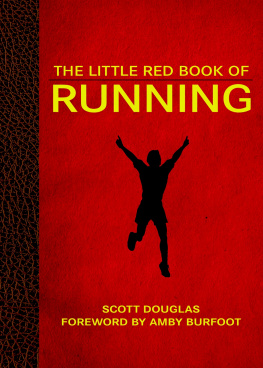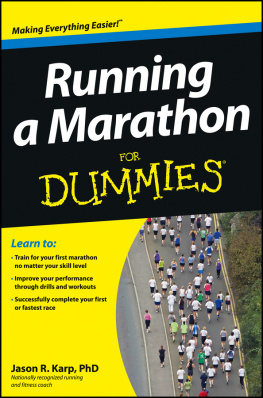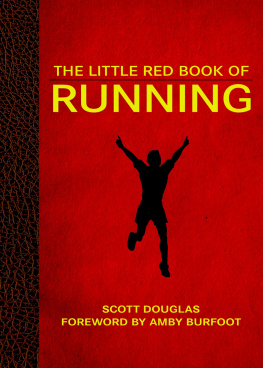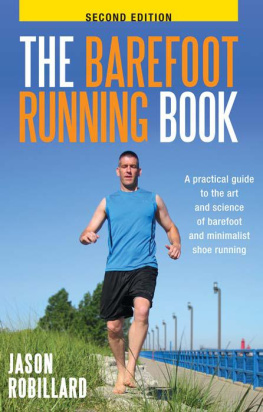ALSO BY JASON KARP
Running a Marathon For Dummies
Running for Women
101 Winning Racing Strategies for Runners
101 Developmental Concepts & Workouts for Cross Country Runners
How to Survive Your PhD
Copyright 2016 by Jason R. Karp
All rights reserved. No part of this book may be reproduced in any manner without the express written consent of the publisher, except in the case of brief excerpts in critical reviews or articles. All inquiries should be addressed to Skyhorse Publishing, 307 West 36th Street, 11th Floor, New York, NY 10018.
Skyhorse Publishing books may be purchased in bulk at special discounts for sales promotion, corporate gifts, fund-raising, or educational purposes. Special editions can also be created to specifications. For details, contact the Special Sales Department, Skyhorse Publishing, 307 West 36th Street, 11th Floor, New York, NY 10018 or .
Skyhorse and Skyhorse Publishing are registered trademarks of Skyhorse Publishing, Inc., a Delaware corporation.
Visit our website at www.skyhorsepublishing.com.
10 9 8 7 6 5 4 3 2 1
Library of Congress Cataloging-in-Publication Data is available on file.
Cover design by Tom Lau
Cover photo credit iStockphoto
ISBN: 978-1-63450-795-0
Ebook ISBN: 978-1-63450-801-8
Printed in the United States of America
To my father, Monroe, whose long walking strides caused me to run to keep up. And to my mother, Muriel, who always encouraged me to pursue my dreams. They are both with me with every step I run. In my parents memory, ten percent of my profit on every book sold will be donated to charitythe American Heart Association in my fathers memory and Susan G. Komen for the Cure in my mothers memory.
CONTENTS
ACKNOWLEDGEMENTS
T his book, the subject of which has been on my mind ever since I became a runner, wouldnt have earned a place on a bookshelf without the support of many people, primary among them my agent, Grace Freedson. I thank her for understanding my ambition and my crazy persistence, and for providing me with the opportunity to share my thoughts and deep passion with the world.
I also thank the team at Skyhorse, including Bill Wolfsthal, Julie Ganz, and Brittney Soldano and cover designer Tom Lau; all of the runners I have met, or run with, or coached over the years, who have taught me so much about the sport and the running life; Jennifer Zerling for confirming the idea to write this book; and the people who have shared their remarkable and inspiring stories, including B.J. (Bedford) Miller, Ronnie Goodman, Walter Herzog, Cody Johnson, Kristin Stehly, and Sabrina Walker. This book is richer for their contributions. Each of them, in different ways, has embodied what the inner runner is all about, and the world is a better place because of them.
Finally, I thank the most talented writer I knowmy twin brother, Jack, for his honest feedback on the first draft of the manuscript and for inspiring me to view my book as a piece of art and do more with my writing than tell a story.
PREFACE
runner
[ruhn-er]
noun
AN ANIMAL THAT GOES QUICKLY BY MOVING THE LEGS MORE
RAPIDLY THAN AT A WALK AND IN SUCH A MANNER THAT FOR
AN INSTANT IN EACH STEP ALL FEET ARE OFF THE GROUND.
R unning is one of the oldest physical activities. Long before the beginning of modern civilization, our ancestors raced through woodlands and prairies, chasing wild animals to feed their families. Running, and being able to run long and fast, was very important.
Many thousands of years later, we have become fascinated by running (and its walking predecessor), one example of which is illustrated by parents joy at their childs first steps. A childs ability to walk is deemed so important that we label this occasion a milestone and document the exact day the childs first steps are taken. This ability to walk, and eventually to run, is met with even more joy from the children themselves when they discover the freedom that it confers. We have all seen the smile on a childs face when he or she runs around the playground.
Many of those boys and girls go on to play organized sports, for most of which running is the foundation. Nearly every sport requires at least some running, and of the few that dontlike golf, diving, or ice hockeyrunning is an important, effective part of the athletes fitness training. Walk onto any college campus, and it wont take long to find out that the most aerobically fit students are the runners on the cross-country team, and the most anaerobically fit students are the sprinters and jumpers on the track-and-field team.
Many coaches in other sports make their athletes run, because they recognize its effectiveness for improving fitness. Unfortunately, some coaches and old-school physical education teachers use running as a form of punishment, making their athletes and students run laps or suicides on the schools basketball court, instead of using running as a way to improve their athletes fitness and teach them how to deal with discomfort. All athletes can learn a lot from running.
Watching young children run around the playground, it is evident that something special is taking place when we move on two legs. Indeed, it is a form of locomotion that makes humans unique from most other animals. There is no shortage of scientists studying running from every possible anglephysiological, biochemical, anatomical, biomechanical, medical, psychological, evolutionary, cognitive, and emotional. Not only is bipedal running unique, how humans think about running and about themselves as runners is also unique.
The reason that humans are the only animals that think about running is, of course, the size and complexity of our brains. Unlike even our nearest mammalian ancestorsapes and monkeyshumans have the ability to look inward and think about themselves, their place in the world, and how to improve their characteristics. Unlike other animals, we are aware of our own mind, our own soul, and our own emotions. And that gives us a tremendous amount of power and responsibility.
If the fields of physical education and exercise science were ever asked to come up with a slogan, a front runner would likely be a line borrowed from the ancient Roman poet Juvenal: Mens sana in corpore sano a sound mind in a sound body. Indeed, many runners seem to support this sentiment with a zeal that approaches the fanatical.
For me, the fanatics started thirty-two years ago, during the Presidential Physical Fitness Tests in fifth grade. Remember those? Two of the tests were the 50-yard dash and 600-meter run. I ran the 50 in 7.3 seconds and the 600 in two minutes and one second. It was then that I discovered that I had some talent, although I wasnt the quickest in my class. But I was close. It was also then that I discovered the freedom that running confers. Little did I know how much it would change my life. I became a runner, and there was no turning back. Some things, once they get started, are impossible to stop.
It was not much later, during an innocent race once around the track in sixth grade on my middle-school track team, that I also discovered that running can be physically uncomfortable. Midway through the final curve of that 400-meter race, I felt something, something that would also change my life. Her name, I learned much later, was Lactate. As I continued to sprint around the track that day, she teased me with her power, drawing on the reigns, gently at first, then harder with each passing moment. Harder. Harder. By the time I had reached the finish line, she had taken control of my whole body with her rapture. I could no longer move. It was love at first sight. My love affair with running and Lactate has continued all these years.

